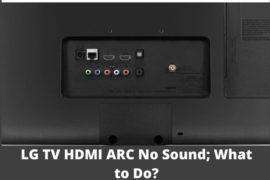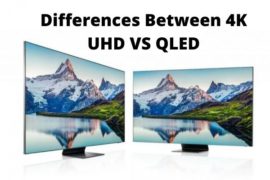Even if you are a non-technical person, you can understand that carrying a 4K signal requires higher bandwidth than 1080p or 720p. Hence, a question logically comes to our minds, do you need a special HDMI cable for 4K?
No, you don’t need to buy a special HDMI cable to watch 4K contents (if you are not using older versions before HDMI 1.4). As the technology has matured, all cables in the market either follow 1.4 standards or are newer (2.0/2.1).
In this article, I am going to talk about different situations and requirements of watching 4K videos. Therefore, you will get a clear idea about the cable type you need for your specific requirements.
Can Any HDMI Cable Do 4K?
Any HDMI cable labeled as high-speed is capable of carrying a 4K signal without any problem.
And, all HDMI cables manufactured after 2009 fall in this category. So, I think that you don’t have to worry about compatibility in 2021.
Based on the version of the cable and its quality, the resolution and refresh rate of different video contents can vary.
Hence, getting your desired quality requires certain HDMI cables. Before 2009, the labels were known as Standard HDMI cables which could support only up to 1080p.
Do You Need HDMI 2.1 For 4K?
Indeed, HDMI 2.1 standard-maintained cables are the best for delivering more vibrant colors.
It also supports dynamic HDR, higher bandwidth, and a faster refresh rate. So, it is better to use a 2.1 HDMI cable but it is not a must.
Do You Need A Special HDMI Cable For 4K?
To have a clear understanding, I need to explain some technical information such as cable specs, versions, compatibilities, and special-use cases.
After reading each point, take a note, and set your requirements. When your checklist is ready, you can go through different products, and easily find the one you are looking for.
Versions and Bandwidth
1. HDMI 1.4
The era of modern HDMI cables started with version 1.4. With its 10.2 bandwidth, transferring packets for 4K resolution became possible.
But the refresh rate is significantly slower in this version which is a problem for gamers. Playing high-end games at 24, 25, or 30 fps is not fun at all.
2. HDMI 2.0
The problems in version 1.4 get solved mostly in its successor HDMI 2.0.
Though the bandwidth increase (from 10.2 to 18 Gbps) is not that significant, this standard can support 4K videos at up to 60Hz.
Also, 2.0 cables can deliver chroma subsampling up to 4:4:4 for a rich and realistic picture production.
3. HDMI 2.1
The most recent version is HDMI 2.1 which has a bandwidth of 48 Gbps. Such a huge difference in the spec compared to its predecessor has made 8K possible.
The best part is that one can play 4K games at a 120Hz refresh rate.
HDR Support
Throughout the years, HDMI cable technology has improved and the latest ones support all kinds of HRD.
Unfortunately, HDMI 1.4 couldn’t support HDR because of its physical and technical limitations.
But the things are not the same in HDMI 2.0 cords. It supports HDR10, HDR10+, HLG, and Dolby Vision.
Different Performance Standards
The last and the most important point is getting to know about different cable standards for different applications.
You can easily differentiate these cables by seeing the labels on them. It includes cable name logos that are assigned by HDMI Licensing Administrator, Inc.
1. Ultra-High-Speed
This is the most common and popular one which supports all features of HDMI 2.1. Also, you can watch an 8K video at 60Hz and a 4K video at a 120Hz refresh rate.
All of those capabilities are made possible by the 48 Gbps bandwidth of this cable type.
2. Premium High-Speed with Ethernet
The specialty of Premium High Speed is having the lowest EMI compared to others. Having one of these HDMI cables can meet the needs of an Ethernet cable.
According to the specs, you should be able to watch 4K contents at a 60Hz refresh rate with ultra-reliable performance.
3. High Speed
Cables labeled with high speed only mean that they have limited capabilities. Due to low bandwidth, they can support 4K resolution up to 30Hz.
However, it is possible to get a faster refresh rate by sending lower resolution through the cable.
4. High-speed Automotive
You know that cables inside a car, truck, or other vehicles have internal relays which can decrease signal strength.
That is why the HDMI cables in vehicles must support more power to be sent through them, and ensure the expected output.
Moreover, special HDMI cables with signs for automotive compatibility can be resistant to dust and corrosion.
5. CL3-rated
Those who are planning to hide the cables inside their living room or bedroom wall must buy the ones with a CL3 rating.
The rating indicates a safe installation of the HDMI cable inside the wall. These are more durable cables with several layers of protection.
Let me suggest you a product of this category. Zeskit manufactures HDMI 2.1 cables with the support for in-wall installation. You can get a large 16ft. cable with high 48Gbps bandwidth at almost 35 bucks.
6. Cable Length
Finally, don’t forget about the length of the cable because the signal gets weaker in longer HDMI cables.
For shorter distances such as 15 or 20 feet, normal cables will do just fine. But longer distances require a repeater to keep the signal strength high.
Also, there are some special cables which can support 50-75 meters, and some can go as far as 120 meters without any repeater.
Conclusion
So, do you need a special HDMI cable for 4K? Although I have answered no to the question, it can be different based on your requirements.
Any HDMI cable available on the market can do the job. But all of them can’t meet certain expectations. Read my article on the Best 4K HDMI Cable, and buy the right one for you.
Related Posts:




